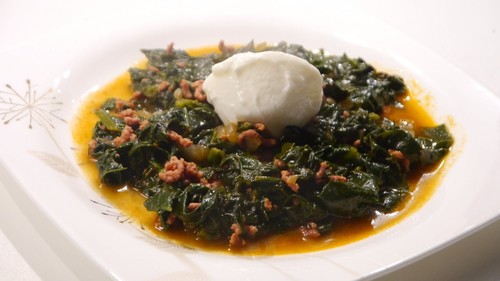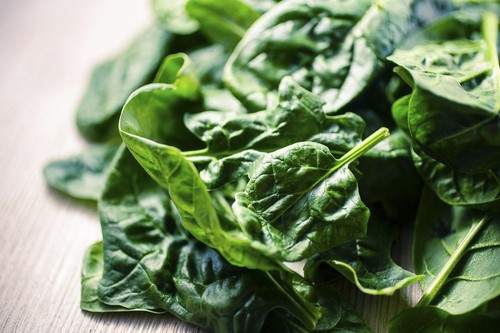© Turkuvaz Haberleşme ve Yayıncılık 2024
Purslane, whose history goes back centuries, is one of the miraculous plants that comes with spring. Its leaves are smooth, thick and spherical. Depending on the variety, the leaves may be 1.5 or 2 centimeters long. In the development period, the round and thick roots spread from the center of the plant and are generally reddish. The plant grows in everywhere in Turkey. Purslane, which is a cure-all with a sourish taste, is an important green-leafy vegetable rich in calcium, vitamin and iron. Purslane also contains omega-3's. Here are some unknown benefits of purslane:
A strong antioxidant
The leaves of purslane are rich in vitamin A and C. Purslane is especially rich in Vitamin A. This vitamin has an effective role in the treatment of eye diseases and protection from various illnesses. Besides, it clears the skin from dead cells with its antioxidants. While Vitamin A protects the body against cancer, it also helps the treatment of oral diseases. There is a high amount of Vitamin C in purslane leaves. Vitamin C boosts the immune system and protects the body against illnesses.
Rich in minerals
Purslane contains calcium, zinc, phosphor, manganese and copper. Zinc is helpful in improving the functions of the immune system. It also protects the body from free radicals that can cause cancer. Magnesium is effective on the skin and hair health. It is a protection against depression. It has an important role in vitamin and mineral absorption in the body. Magnesium is useful in the treatment of asthma and allergic illnesses, as well. With its strong antioxidant effect, it becomes a shield against any cancer. Thinking calcium and copper as less effective is impossible. While calcium provides bone development, copper is effective in the absorption of minerals, such as calcium and iron. Copper has an importance in the production of hemoglobin in the body. A copper deficiency can cause impairment in the immune system, drops in bodily resistance, dermatological diseases and neurological problems. Phosphor and calcium are responsible for bone and tooth health in the body. Calcium is also necessary for nerve, muscle and blood functions. In order to benefit from all these vitamin and minerals, you need to consume purslane regularly.

Enemy of bad cholesterol
According to research, purslane decreases the production of LDL, which is bad cholesterol.
Diet friendly
One-hundred grams of purslane contains 16 calories. This can be a good news for people who are trying to limit their calorie intake. It is diet-friendly with its low calories. Besides, it is full of dietary fiber which makes you feel full after meals. It limits your nutrition and helps you to lose weight.

Heart friendly
The omega-3 fatty acid in purslane has an effective role in cardiovascular health. Omega-3 is in the category of polyunsaturated, essential fatty acids. Your body cannot produce essential fatty acids. Therefore, you should take them from foods. Ethnobiologists who search for the relation between primitive societies and the plants around them believe that the plants people ate long ago were providing more nutrients than the ones that we consume today. For instance, people were consuming 390 milligrams of vitamin C on average from fruits and vegetables in a day 10,000 years ago. However, a person consumes only 88 milligrams of vitamin C per day in the present. Therefore, nutrition rich in vitamin C is important, especially in mid seasons. Try to consume green-leafy vegetables often such as purslane.

Foods for a healthy heart
Salmon: Salmon is a natural omega-3 source. In order to have a healthy heart, consume fish rich in omega-3 two times a week.
Dried fruits and nuts: Dried fruits and nuts are full of heart-friendly omega-3 fats. Hazelnuts, walnuts and pistachios are the three-highest nuts rich in omega-3. Pumpkin seeds and sunflower seeds also have a high level of omega-3. They are perfect snacks for picnics. Hazelnuts also make you feel full and keep you away from junk foods.
Olive oil/Rapeseed oil: They contain mono and polyunsaturated omega-3 fats which are beneficial to cardiovascular health and decrease inflammation. These oils are perfect options for cooking. In order to benefit from their quality, add some to your salads along with colorful and fresh vegetables. You will have a low-calorie and delicious meal.
Grapefruit: Citrus fruits, especially grapefruits, contains Vitamin C, which decreases inflammation causing stroke and heart diseases, flavonoids and antioxidants. Add it to your salad or its sauce. It can be also a cold juice alternative in the summer months.
Pomegranate: Pomegranates contain antioxidants called polyphenol. These antioxidants provide protection against heart diseases, decreasing bad cholesterol and blood pressure and slowing the plaque forming in arteries. Pomegranate antioxidants are three times more beneficial than those found in green tea. You can freshen it up, adding it to frozen yogurt, light desserts and salads.
Garlic: Garlic helps protect from heart diseases, slowing down fat storage in the arteries and dropping blood pressure. You can add it to tomato sauces for pasta or with whole-wheat bread. You can use it as a sauce in the summer after mixing it with spices or vegetables.
Avocado: Avocados are a fruit containing monounsaturated and healthy fats which helps to lower cholesterol. Avocados are also rich in folate and Vitamin E, C and B6. Add it to salads, soups or sauces. You will add both color and taste to your food.
Cornelian cherry: Cornelian cherries have antioxidants that protect the heart. Actually, it increases cholesterol removal that is regulated by the liver. Flavonoids called anthocyanin protect from cells injury and repair injured cells. They help lower bad cholesterol and provide relief to blood vessels. Consume purple-colored fruits and vegetables four or five times a week.
Prepare and present purslane
Purslane stems and buds can be eaten. Cut rigid roots and stems, using a sharp knife. In order to protect most of the nutrients, keep it at a low temperature and cook quickly. Even if its antioxidants decrease while cooking or frying, its minerals, carotenes and flavonoids can be protected by cooking with steam.
Fresh, raw leaves can be used as a salad. Here is a perfect purslane salad: Cut two bunches of parsley finely and pluck the leaves of purslane. Mix these two in a bowl. Add a cucumber and some tomatoes if you want. Add sheep's sorrel, rocket and radish to your salad. Add two soup spoons of olive oil and one soup spoon of fresh lemon juice to your salad. Your salad is ready to consume.
Purslane stem and leaves that are sauteed with onion and garlic can be consumed as a garnish together with meat, fish and chicken.
Purslane can be consumed as a soup, as well. Here is a perfect purslane soup: Clean and wash the purslane. Put some oil in a stock pot and add the purslane. Cook the purslane for a few minutes until it softens. Then put some water and bring it to a boil. Mix flour, garlic, lemon juice and salt in a blender. After the purslane is cooked, add it to this mixture. Add hot water and your soup is ready. You can also consume purslane in your breakfast with cheese.
